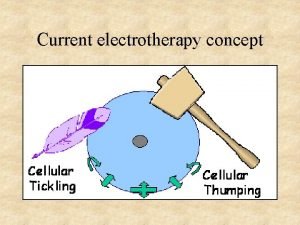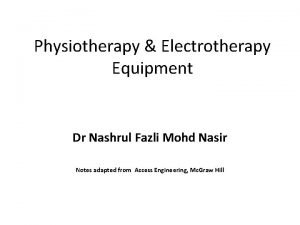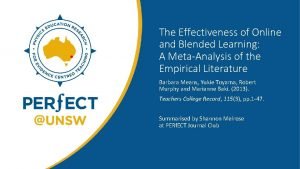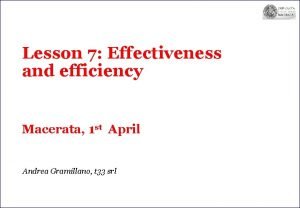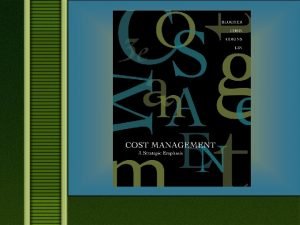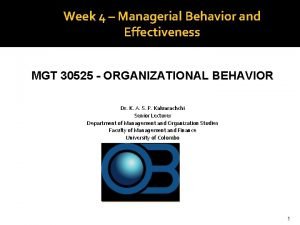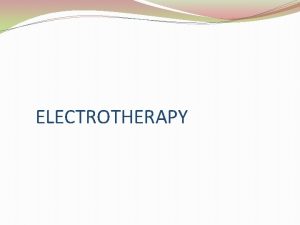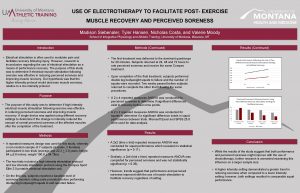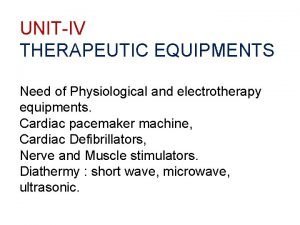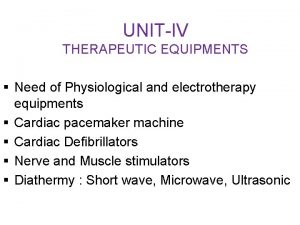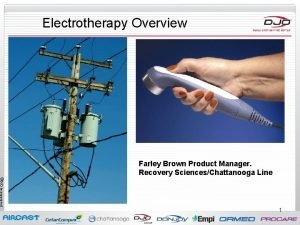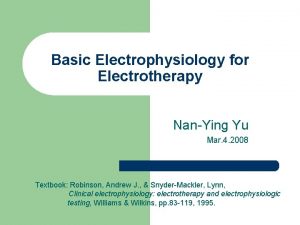The Effectiveness of Exercise and Electrotherapy in the










- Slides: 10

The Effectiveness of Exercise and Electrotherapy in the Management of Temporomandibular Disorder Ardiana Murtezani MD, Ph. D 1, 2, Nerimane Abazi MD 1, 2, Zana Ibraimi PHARM Ph. D 2 , Fatime Haxholli MD 1, 2, Zana Agani DDS Ph. D 2, 3 , Elena Kamberi DDS 2

INTRODUCTION �Temporomandibular disorders (TMDs) are chronic musculoskeletal pain conditions. �Clinical manifestation of pain is related to the use of the joint stiffness during first motions after prolonged rest and limited joint range of motion cause significant pain and disability.

INTRODUCTION �There is little evidence that physical therapy methods of management cause long-lasting reductions in signs and symptoms. �Exercise programs designed to improve physical fitness have beneficial effects on chronic pain and disability of the musculoskeletal system.

OBJECTIVE �The purpose of this study was to assess the effectiveness of physical therapy interventions in the management of temporomandibular disorders.

MATERIALS & METHODS �A prospective comparative study with a 3 - month follow-up period was conducted between October 2014 and December 2014 at the Physical Medicine and Rehabilitation Clinic in Prishtina.

MATERIALS & METHODS �Forty six patients with TMDs, (more than three months duration of symptoms) were randomized into two groups: the mid laser therapy group (n=24) and combination of active exercise and manual therapy group (n=22).

MATERIALS & METHODS � The mid laser therapy group patients were treated with fifteen sessions of mid laser therapy. � The treatment period of both groups was 6 weeks at an outpatient clinic. Following main outcome measures were evaluated: (1) pain at rest (2) pain at stress (3) impairment (4) mouth opening at base-line, before and after treatment and at 3 month follow-up.

MATERIALS AND METHODS

RESULTS � Significant reduction in pain was observed in both treatment groups. � In the exercise group 73% (16/22) achieved at least 80% improvement from baseline in TMJ pain at 3 months compared with 54% (13/24) in the mid laser therapy group (difference of 19%; 95% confidence interval 220 to 30%). � Active and passive maximum mouth opening has been greater in the exercise group (p< 0. 05).

THANK YOU!
 Harborside spine and sports
Harborside spine and sports Surging in electrotherapy
Surging in electrotherapy The effectiveness of online and blended learning
The effectiveness of online and blended learning Arrangement of people in an organization
Arrangement of people in an organization Efficiency and effectiveness examples
Efficiency and effectiveness examples Volumetric efficiency formula
Volumetric efficiency formula Efficiency and effectiveness in higher education
Efficiency and effectiveness in higher education Managing productivity and marketing effectiveness
Managing productivity and marketing effectiveness Managerial behavior and effectiveness
Managerial behavior and effectiveness Criminology unit 4 crime and punishment
Criminology unit 4 crime and punishment Steiners model of group effectiveness
Steiners model of group effectiveness
